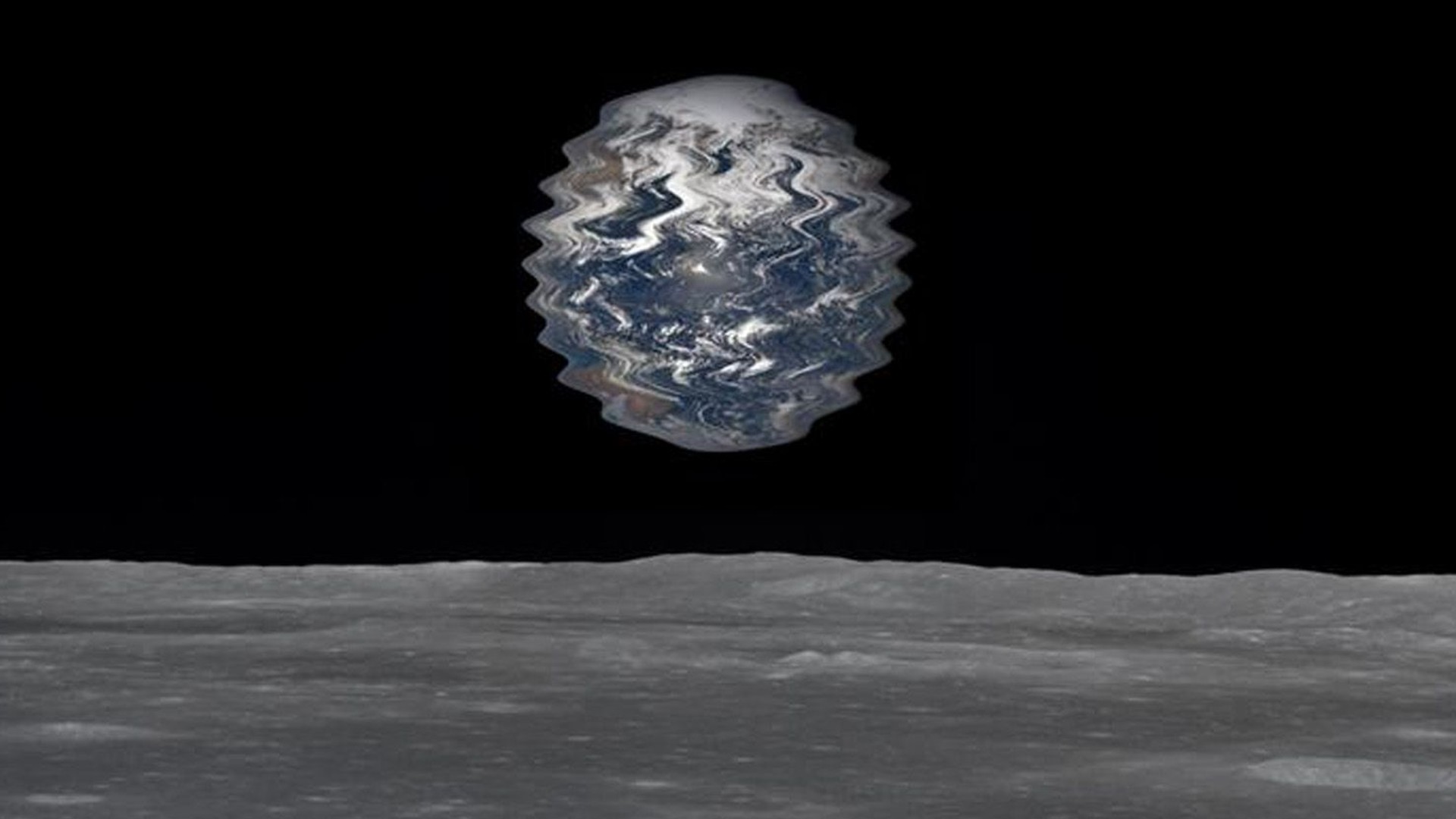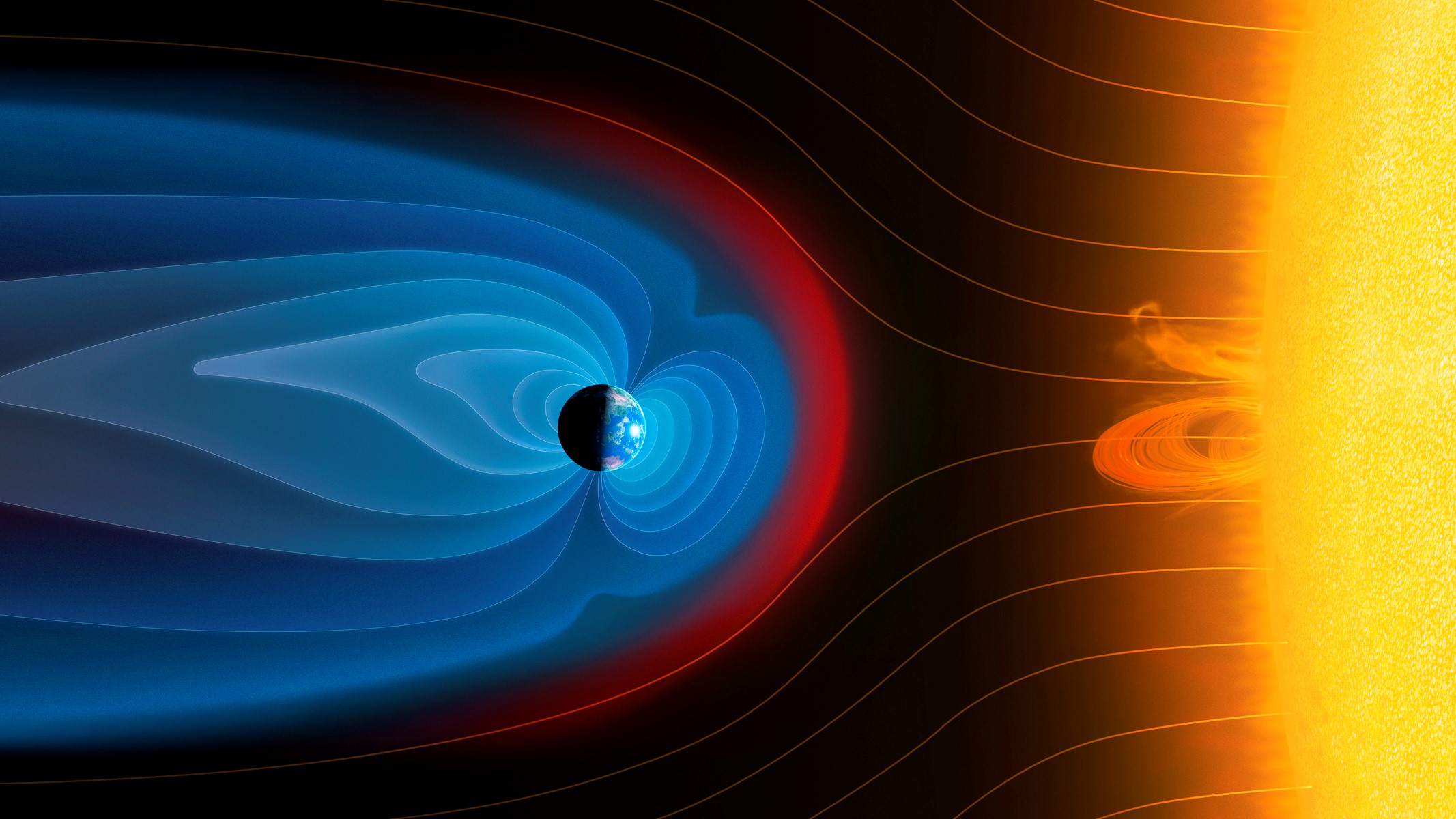Earthquakes seem more intense after cosmic ray strikes. Scientists say this is why.

Earth seems to shake more after intense cosmic radiation hits its surface, a new study suggests.
The surprising study by a team of Polish researchers analyzed 50 years worth of data and found that the intensity of global seismic activity correlated with the average variation in the intensity of secondary particles created by cosmic radiation with a time lag of around two weeks. Secondary cosmic radiation is produced by the interactions of cosmic rays and Earth's atmosphere, which suggests that the link between the two phenomena may have nothing to do with the intensity of the arriving cosmic rays but rather with their ability to breach Earth's defenses.
The team said that they ruled out the possibility that the observed correlation was down to chance alone.
Related: The 1st photo of Earth from Europe's powerful new satellite is amazing
If a connection is confirmed, scientists could use it to better predict powerful earthquakes that cause massive structural damage and human casualties, potentially reducing the impact of such natural disasters.
"At first glance, the idea that there is a link between earthquakes and cosmic radiation, in its primary form reaching us mainly from the sun and deep space, may seem strange," Cosmic Ray Extremely Distributed Observatory (CREDO) coordinator Piotr Homola said in a statement. "However, its physical foundations are fully rational."
CREDO is an international virtual cosmic ray observatory that collects and processes data from a range of detectors, from sophisticated scientific instruments down to the ordinary smartphones of volunteers. Its primary aim is to monitor global changes in the flux of secondary cosmic radiation reaching the surface of our planet that is created in the stratosphere when particles of cosmic radiation collide with the gas molecules and trigger cascades of secondary particles.
Breaking space news, the latest updates on rocket launches, skywatching events and more!
Scientists think that the strange correlation between cosmic radiation and seismic activity could be explained by the behavior of eddy currents in the liquid core of our planet which drive the generation of Earth's magnetic field. This field, also known as the magnetosphere, is responsible for deflecting charged particles which make up cosmic radiation.
The team reasons that large earthquakes may be associated with disturbances in the flow of matter that drives Earth's dynamo, which also affects the magnetosphere. This would, in turn, affect the ability of primary charged particles to penetrate the planet's atmosphere, which would then have an impact on the amount of secondary cosmic radiation particles detected on the planet's surface.
The CREDO team looked at cosmic ray intensity data collected by the Neutron Monitor Database project and the Pierre Auger Observatory, with these observatories selected because they sit on different sides of the equator and use varied detection methods.
The data sets were cross-checked against changes in solar activity detailed in the Solar Influences Data Analysis Centre database and information regarding seismic activity recorded by the U.S. Geological Survey program.
Using several statistical techniques, the scientists saw that for the period studied, a correlation between changes in the intensity of secondary cosmic radiation and the summed magnitude of all earthquakes with magnitudes greater than or equal to four emerged. This correlation only manifested when cosmic ray data was shifted ahead of the seismic data by 15 days. The fact that the changes in cosmic radiation come before the earth tremors suggests the correlation could be used as a foundation of a future earthquake warning system.
What isn't clear from the team's research, however, is whether this apparent correlation could be used to predict where on Earth an earthquake will strike. This is because changes in cosmic ray intensity and earthquakes were only correlated when seismic activity on a global scale was taken into account. The correlation disappeared in the location-specific analysis carried out by CREDO.
"In the scientific world, it is accepted that a discovery can be said to have been made when the statistical confidence level of the corroborating data reaches five sigma or standard deviations," Homola explained. "For the observed correlation, we obtained more than six sigma, which means a chance of less than one in a billion that the correlation is due to chance. We, therefore, have a very good statistical basis for claiming that we have discovered a truly existing phenomenon."
The research exemplifies the fact that Earth's massive magnetic field can actually act as a huge and extremely sensitive particle detector, many times larger than any human-built instrument that does the same job.
"The most important thing at this stage of the research is that we have demonstrated a link between the cosmic radiation recorded at the surface of our planet and its seismicity — and if there is anything we can be sure of, it is that our observation points to entirely new and exciting research opportunities," Homola concluded.
To join investigations of cosmic radiation, you can turn your smartphone into a cosmic ray detector by installing the free CREDO Detector app on the Google Play Store or on the App Store.
The research is published in the Journal of Atmospheric and Solar-Terrestrial Physics.

Robert Lea is a science journalist in the U.K. whose articles have been published in Physics World, New Scientist, Astronomy Magazine, All About Space, Newsweek and ZME Science. He also writes about science communication for Elsevier and the European Journal of Physics. Rob holds a bachelor of science degree in physics and astronomy from the U.K.’s Open University. Follow him on Twitter @sciencef1rst.

